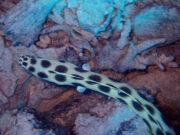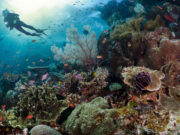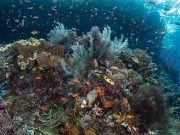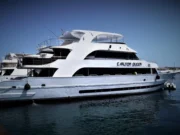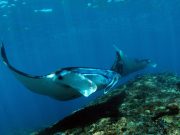Seahorses are delightful to spot, curling onto sponges, coral or sea grass. They range in size from the tiny Hippocampus denise which is just 16 mm, to the 35 cm (1 foot) Pacific seahorse.
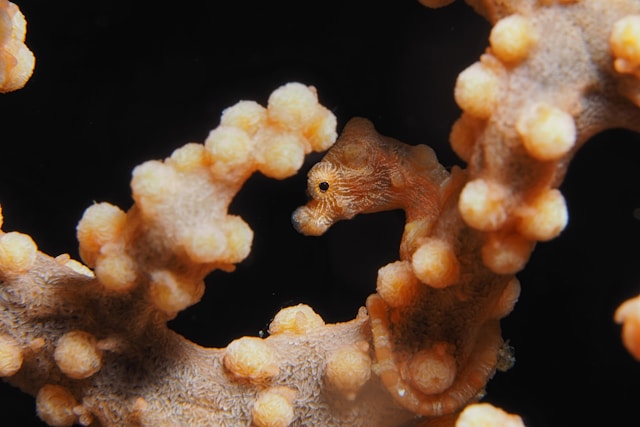
Seahorses are not easily seen as they blend in with their surroundings. They can change skin colour to match their environment and even grow skin filaments to imitate seaweed or sea grass growths.

The seahorse is remarkable as the male becomes pregnant. The female seahorse deposits her eggs into the male’s pouch where they are fertilised. The eggs remain in the male’s pouch until they hatch, when the male gives birth to tiny seahorses. The time to hatching takes between 10 days and four weeks, depending on the species and water temperature. Male seahorses are often pregnant for as many as 7 months in the year. The natural lifespan of seahorses is not known, but believed to be from one year for small species to five years for a larger species.
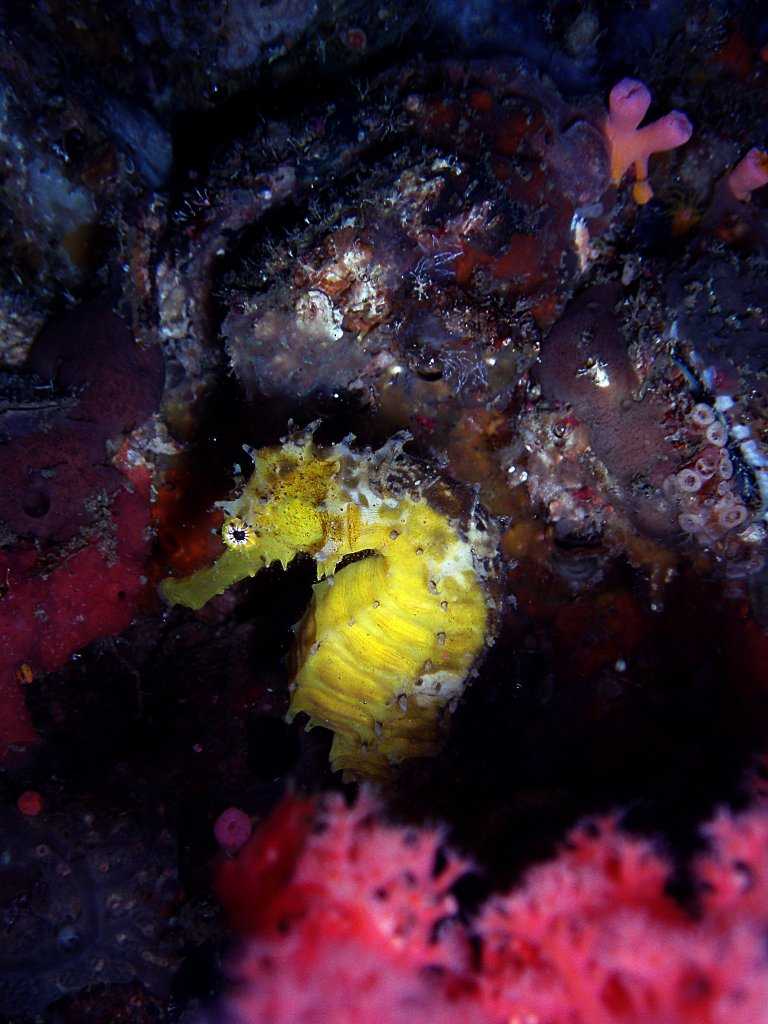
Seahorses are opportunistic predators, sitting and waiting until prey come close enough and then sucking them rapidly from the water with their long snouts. Their eyes move independently of each other, maximizing their search area. They will eat anything small enough to fit into their mouths.
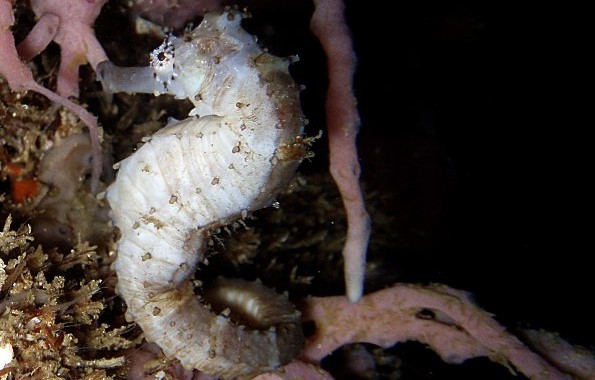
The name hippocampus comes from the ancient Greek, loosely hippos meaning horse and campus meaning sea monster. Hippocampi refer to the mythical creatures on which the sea gods rode. Early zoologists initially classified seahorses as insects not fish.
All seahorses for which data is available are listed on the IUCN Red List of Threatened Species as either Vulnerable or Endangered. This means they are facing a high risk of extinction in the wild. There are many reasons for their vulnerability. Seahorses are exploited for traditional medicines and the aquarium trade. Male brooding means that young depend on parental survival for far longer than in most fish. Many species are monogamous so widowed animals don’t reproduce until they have found a new partner. Their low population density and low mobility means that this can take some time. Habitat degradation is also a real threat to populations as they mainly inhabit shallow, coastal areas, which are highly influenced by human activities.
Further Reading
IUCN 2006. 2006 IUCN Red List of Threatened Species. <www.iucnredlist.org>. Downloaded on 20 April 2007.
Project Seahorse – http://seahorse.fisheries.ubc.ca/
What do you think of this news item? Join a discussion.

